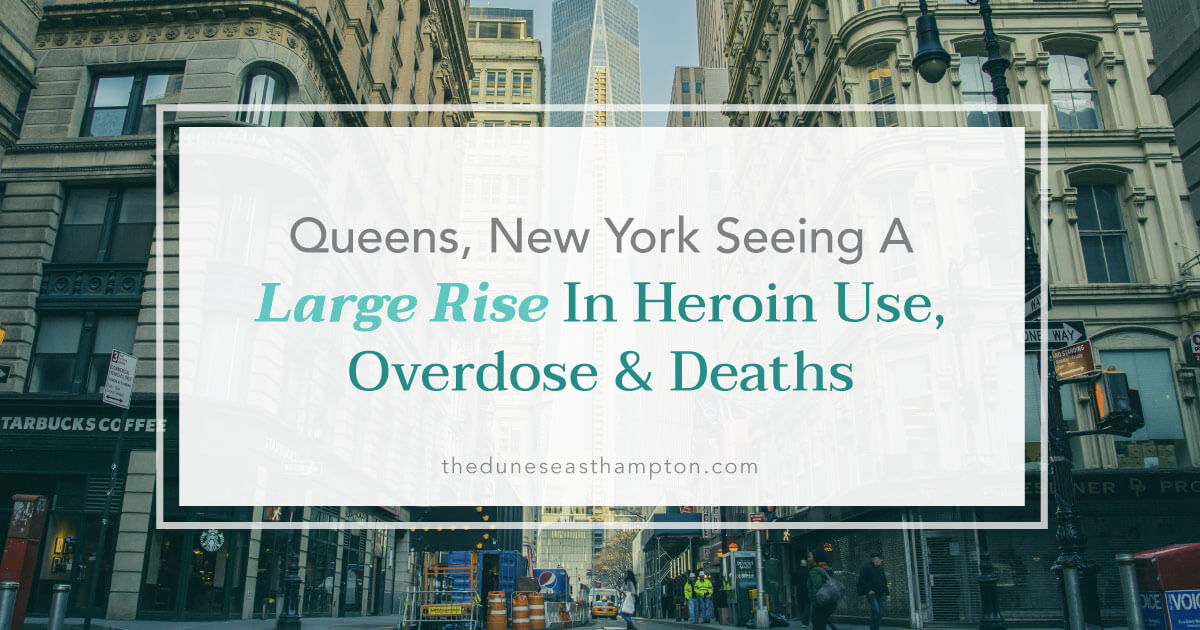
Drug Use Throughout New York
The year 2014 saw a record-breaking high of 825 overdose deaths in New York. This represents an increase of more than 23 percent from 2013 and is a whopping 25 times the number of deaths in 2004. Such a significant jump in just one decade showcases the swiftly climbing issue New York has had with drug abuse and overdoses. The overall number of overdose deaths in New York increased 144 percent between 2005 and 2014. The national increase during the same time period was 58 percent – a frightening amount, but nowhere close to New York’s average.
Opioid-related deaths have hit an all-time high throughout the U.S. and soared in NYC. In 2005, less than 29 percent of all deaths in New York were opioid-related. By 2014, the number of deaths in which opioids were a factor rose to 43 percent. The number of drug-related overdose deaths has risen by 73 percent in NYC in the last five years, according to data from the New York State Department of Health. Drug overdose death rates have increased across the Big Apple for the fifth consecutive year. In 2015, there were 937 accidental overdose deaths in New York – up from 800 such deaths in 2014. By comparison, in 2010 there were only 541 fatal accidental overdoses.
The rate of heroin overdoses jumped even more than the rate of total overdoses. New York experienced a 158 percent increase in heroin-related overdose deaths in just one year. Overdoses outnumbered homicides in NYC in 2015, and 2014 was the second year in a row in which overdose deaths outpaced murders in New York City. The New York City Police Department seized approximately 2,186 pounds of heroin in 2014 – what they believe to be just a fraction of what’s on the streets. Law enforcement officials state that this heroin epidemic is the worst they’ve seen in history – including the heroin surges from 30 to 40 years ago.
While many news reports have focused on the rising numbers of heroin in white, upper-class, suburban areas, Queens, has long been a borough in which heroin is a major crisis. In 2014, there were 1,836 opioid-related emergency department visits within Queens. From 2009 to 2013, Queens saw a mean annual frequency of drug overdose deaths of 138 people. The same statistic for heroin saw a mean annual frequency of 33 deaths. These statistics are much higher than they were 10 years ago and have only risen through 2016.
In October 2016, police arrested a Queens’s man for allegedly selling the heroin that caused one man of Westbury, Long Island, to overdose and die. The man arrested, Rashad Salamalay, was carrying 100 small plastic bags of heroin when police arrested him in Queens Village. Law enforcement charged Salamalay with the sale and possession of heroin. Earlier in 2016, police officers arrested and charged two men in Elmhurst, Queens, with transporting approximately 100 pounds of heroin – approximately $14 million worth – smuggled inside of vehicle parts. Unfortunately, these are just two successful seizures in Queens. Law officials have barely scratched the surface of the heroin problem in the city.
Heroin and Prescription Opioids on the Rise in New York
Prescription opioids are even more in tandem with heroin than alcohol. Drug manufacturers make the prescription painkillers such as OxyContin, Percocet, Vicodin, and Demerol with the opioids morphine, methadone, buprenorphine, oxycodone, and hydrocodone. Heroin also is an opioid and achieves the same effects as these prescription pain medications. The upsurge in prescription opioid misuse and abuse around the country has consequently led to a significant increase in heroin use.
Heroin is much cheaper and easier to obtain on the streets of Queens than prescription medications. It’s a reasonable jump to assume that prescription opioid addicts would therefore eventually turn to heroin for a more cost-effective way to achieve the same high. Prescription opioid abuse affects different demographics around America – not just low-income areas as previous drug use statistics have shown. Many addicts start off as people with genuine chronic pain or health conditions who receive a painkiller prescription and accidentally become addicted.
Most people don’t realize how addictive prescription medications can be, and they believe they are safe because they come from a doctor. These pain medications contain the same ingredients as heroin and are just as addictive. Heroin, however, is much stronger than prescription pills, so making the switch from prescription medications to heroin can easily lead to an accidental overdose, because users use more and more of the potent drug to combat tolerance. The rise in prescription opioid use in Queens and around The Big Apple has fueled the increase in heroin abuse and overdose deaths.
The Future of Queens
Current heroin statistics paint a grim picture of Queens, New York. Drug use in the area has become rampant, even as law enforcement and the DEA are doing their best to catch major heroin distributors and smugglers. Prescription opioid and heroin abuse is a national epidemic, and Queens has not escaped unscathed. People in Queens have easy access to a large amount of heroin in the streets, at competitive prices. If there’s any hope for Queens in the future, it will depend on reducing the access to, and the supply of Heroin.







